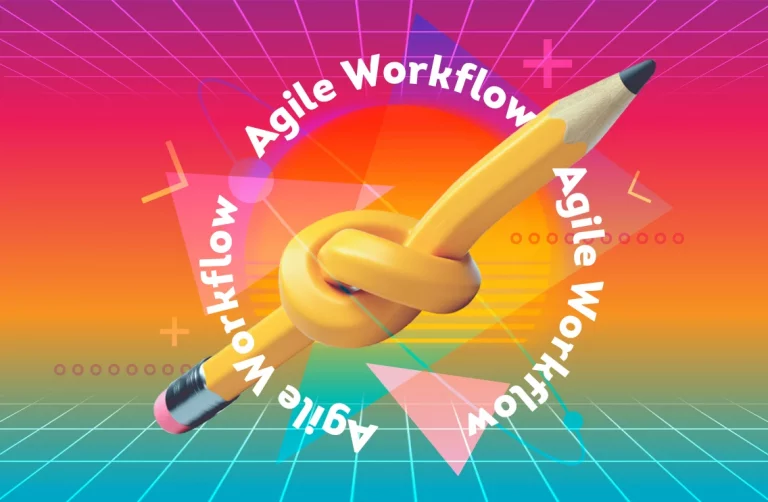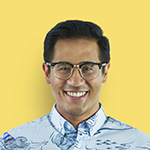What is an agile workflow
Ask any software or developer based professional and they will tell you that “agile” is a workflow methodology that is commonly used in software development. This workflow involves breaking down a project into smaller pieces called sprints. It is essentially an iterative process. The main goal for this is to create a functional product as quickly as possible. But that doesn’t mean it stops there. At the end of each sprint, the project team evaluates the product and then makes necessary adjustments for the next iteration.
All of these steps are achieved through very close collaboration across teams and stakeholders. The ability to communicate frequently and the willingness to adapt to new information and feedback spells the difference between success and failure. Nevertheless, the results of an agile workflow speaks for itself. Other industries have taken notice and adopted this approach to their own project management.
Many creatives, especially in the UX/UI design specialties, are no stranger to working via an agile workflow. In fact, one can draw parallels in design ops practices. But there certainly are lessons to be learned and best practices to adopt to benefit other creatives. Whether you are a graphic designer or a marketer, in a branding agency or in advertising, skilling up on this not only helps productivity but also in becoming a more agile creative.

Agile workflows and deadlines
Before we delve into the things we can learn from an agile workflow, let’s first address the elephant in the room. In its ideal form, agility enables quicker to market creative solutions. But both creatives and marketers alike should be wary of waterfall workflows creeping into agile. Adopting an agile approach neither necessitates unrealistic request and deadlines nor ignores constructive feedback and requirements. It does not do away with design reviews or approval processes but rather streamlines them.
When we find ourselves working with a client or agency that practices an agile workflow, let’s always fall back on the core principles of agile. At its heart, it is design thinking and human centricity. A process that is collaborative and people oriented. One that is rooted in empathy and human–centric…to the end users and to your team. With that said, let’s dive into it shall we?
What we can learn from an agile workflow
1. Clearly defined goals
Every sprint has a clear goal every member of the team works toward. This means everyone across the project team knows what success looks like at the end of a sprint and at the end of the project, in order for everyone to work toward a singular outcome. How we as marketers and creatives can apply this, is by setting clear expectations and outcomes. This can be on a campaign planning level or even down to change requests.
Without a clear understanding of project goals and priorities, staying focused and working efficiently can prove to be a challenge. After all, the right leg should know where the left is going in order to sprint, right? This leads to the next lesson we can learn from an agile workflow.
2. Effective communication
Constant and effective communication is key in an agile workflow. This means alignment in every step of the way. More important, this also means communicating openly and honestly about progress, issues and requirements. Gone are working in silos or hierarchical bottlenecks. Essentially, this ensures that everyone in the project team is on the same page, working toward the same goals and are working off of the same realities. It doesn’t take a scrum master for both creatives and marketers to recognise the value in this. Failure to do so can result in misunderstanding and project delays.
3. Empowering the project team
An agile workflow methodology also places great importance on collaboration and self-organisation. This means that each team member is empowered to make decisions and take ownership of their work. This also means trusting in the capabilities and expertise of each individual. Ultimately resulting in a greater sense of ownership and accountability. Similarly, client-agency-vendor relationships should be founded on mutual trust and respect. Within teams, the morale and confidence boosting effect of an empowered team leads not only to better results but also to a more fulfilled employee.
4. Iterative and continuous improvement
As mentioned earlier, an agile workflow is an iterative process made up of sprints. What is most valuable with this, is the frequent feedback and course correction of each small functional piece of the project sprint cycle. Whether you’re a creative or a marketer, it is infinitely more efficient to check in with your team at small milestones rather than at the end of longer ones. Imagine the time and effort wasted to spend finessing a design or a campaign only to realise a critical misalignment!
This also applies to the project level. Consider optimisation. An agile workflow places great importance on continuous improvements. Creatives and marketers should ask themselves at the end of every sprint, project or campaign, “What can we do better?”. Whether it’s processes or deliverables, we should strive to emulate an agile mindset and identify areas for improvement. Data plays a critical part in this. Studying data gleaned from feedback, research or even campaign metrics, gives us deeper understanding on marketing efforts. All to fuel improvement and ensure a better outcome.
The agile creative worker

There are many project management workflows available out there. While there isn’t a one-size-fits-all approach, there certainly are tips and lessons we can take away from them. In the case of agile workflows, the benefits are manifold. For marketers, these insights leads to better results, improved collaboration and even provide an insight on the amount of thinking happening behind the scenes. For creatives, these are valuable insights to incorporate in the design thinking process and our own processes as well. Doing so not only improves capabilities as creatives but also builds resilience. In an industry that moves a mile a minute, adopting an agile workflow mindset keeps us nimbly moving with the times.
Regardless which side of the marketing equation you subscribe to, these lessons allow a creative agency or a marketing department to improve collaboration, inculcate a mentality of optimisation and constant improvement, as well as raise satisfaction across teams and individuals. It refocuses marketing and creative efforts, and processes to one that is human centered and data oriented.






